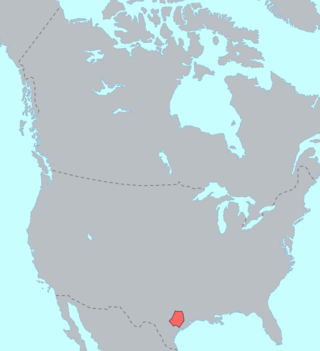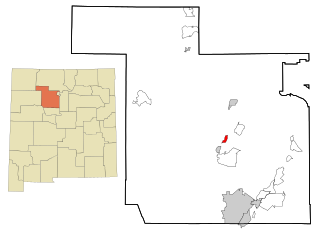Related Research Articles
Ganda or Luganda is a Bantu language spoken in the African Great Lakes region. It is one of the major languages in Uganda and is spoken by more than 5.56 million Baganda and other people principally in central Uganda, including the country's capital, Kampala. Typologically, it is an agglutinative, tonal language with subject–verb–object word order and nominative–accusative morphosyntactic alignment.
Old Javanese or Kawi is the oldest attested phase of the Javanese language. It was spoken in the eastern part of what is now Central Java and the whole of East Java, Indonesia. As a literary language, Kawi was used across Java and on the islands of Madura, Bali, and Lombok. It had a sizable vocabulary of Sanskrit loanwords but had not yet developed the formal krama language register, to be used with one's social superiors that is characteristic of modern Javanese.

The Tonkawa language was spoken in Oklahoma, Texas, and New Mexico by the Tonkawa people. A language isolate, with no known related languages, Tonkawa has not had L1 speakers since the mid 20th centiury. Most Tonkawa people now only speak English, but revitalization is underway.
Argobba is an Ethiopian Semitic language spoken in several districts of Afar, Amhara, and Oromia regions of Ethiopia by the Argobba people. It belongs to the South Ethiopic languages subgroup, and is closely related to Amharic.
The Ojibwe language is an Algonquian North American indigenous language spoken throughout the Great Lakes region and westward onto the northern plains. It is one of the largest indigenous language north of Mexico in terms of number of speakers, and exhibits a large number of divergent dialects. For the most part, this article describes the Minnesota variety of the Southwestern dialect. The orthography used is the Fiero Double-Vowel System.
Tübatulabal is an Uto-Aztecan language, traditionally spoken in Kern County, California, United States. It is the traditional language of the Tübatulabal, who still speak the traditional language in addition to English. The language originally had three main dialects: Bakalanchi, Pakanapul and Palegawan.
The Yimas language is spoken by the Yimas people, who populate the Sepik River Basin region of Papua New Guinea. It is spoken primarily in Yimas village, Karawari Rural LLG, East Sepik Province. It is a member of the Lower-Sepik language family. All 250-300 speakers of Yimas live in two villages along the lower reaches of the Arafundi River, which stems from a tributary of the Sepik River known as the Karawari River.

Tsez, also known as Dido, is a Northeast Caucasian language with about 15,000 speakers spoken by the Tsez, a Muslim people in the mountainous Tsunta District of southwestern Dagestan in Russia. The name is said to derive from the Tsez word for 'eagle', but this is most likely a folk etymology. The name Dido is derived from the Georgian word დიდი, meaning 'big'.
Äiwoo is an Oceanic language spoken on the Santa Cruz Islands and the Reef Islands in the Temotu Province of the Solomon Islands.

The Tarahumara language is a Mexican Indigenous language of the Uto-Aztecan language family spoken by around 70,000 Tarahumara (Rarámuri/Ralámuli) people in the state of Chihuahua, according to a 2002 census conducted by the government of Mexico.

Wayuu, or Guajiro, is a major Arawakan language spoken by 400,000 indigenous Wayuu people in northwestern Venezuela and northeastern Colombia on the Guajira Peninsula and surrounding Lake Maracaibo.
Arosi is a Southeast Solomonic language spoken on the island of Makira. Arosi is primarily spoken by inhabitants who live to the west of the Wango River on Makira. Makira is in the easternmost part of the Solomon Islands. Makira was visited and named by Álvaro de Mendaña de Neira in 1588. Upon landing on Makira, the Spanish were the first to record Arosi, but only six words were initially recorded. Arosi is one of the lesser known languages in Melanesia.
Bororo (Borôro), also known as Boe, is the sole surviving language of a small family believed to be part of the Macro-Jê languages. It is spoken by the Bororo, hunters and gatherers in the central Mato Grosso region of Brazil.
Lau, also known as Mala, is an Oceanic language spoken on northeast Malaita, in the Solomon Islands. In 1999, Lau had about 16,937 first-language speakers, with many second-language speakers through Malaitan communities in the Solomon Islands, especially in Honiara.
Baiso or Bayso is a Lowland East Cushitic language belonging to the Omo–Tana subgroup, and is spoken in Ethiopia, in the region around Lake Abaya.

Jemez is a Kiowa-Tanoan language spoken by the Jemez Pueblo people in New Mexico. It has no common written form, as tribal rules do not allow the language to be transcribed; linguists describing the language have used the Americanist phonetic notation with slight modifications.
Lau (Law) is a Jukunoid language of Lau LGA, Taraba State, Nigeria. Lau speakers claim that their language is mutually intelligible with the Jukunoid language varieties spoken in Kunini, Bandawa, and Jeshi. They also live alongside the Central Sudanic-speaking Laka, who live in Laka ward of Lau LGA.
Mehek is a Tama language spoken by about 6300 people in a somewhat mountainous area along the southern base of the Torricelli Mountains in northwestern Papua New Guinea. Mehek is spoken in six villages of Sandaun Province: Nuku, Yiminum, Mansuku, Yifkindu, Wilwil, and Kafle. Mehek is most closely related to Pahi, with 51% lexical similarity, and spoken approximately 20 kilometers to the southwest. Mehek is a fairly typical Papuan language, being verb-final, having a relatively simple phonology, and agglutinative morphology. There is very little published information about Mehek. The literacy rate in Tok Pisin, spoken by nearly everyone, is 50-75%. Mehek is not written, so there is no literacy in Mehek. Tok Pisin is primarily used in the schools, with 50% children attending. There is also a sign language used by the large number of deaf people in the Mehek community.
The Otoro language is a Heiban language which belongs to the Kordofanian Languages and therefore it is a part of the Niger-Congo language family. In a smaller view the Otoro is a segment of the "central branch“ from the so-called Koalib-Moro Group of the languages which are spoken in the Nuba Mountains. The Otoro language is spoken within the geographical regions encompassing Kuartal, Zayd and Kauda in Sudan. The precise number of Otoro speakers is unknown, though current evaluates suggest it to be exceeding 17,000 people.
Mortlockese, also known as Mortlock or Nomoi, is a language that belongs to the Chuukic group of Micronesian languages in the Federated States of Micronesia spoken primarily in the Mortlock Islands. It is nearly intelligible with Satawalese, with an 18 percent intelligibility and an 82 percent lexical similarity, and Puluwatese, with a 75 percent intelligibility and an 83 percent lexical similarity. The language today has become mutually intelligible with Chuukese, though marked with a distinct Mortlockese accent. Linguistic patterns show that Mortlockese is converging with Chuukese since Mortlockese now has an 80 to 85 percent lexical similarity.